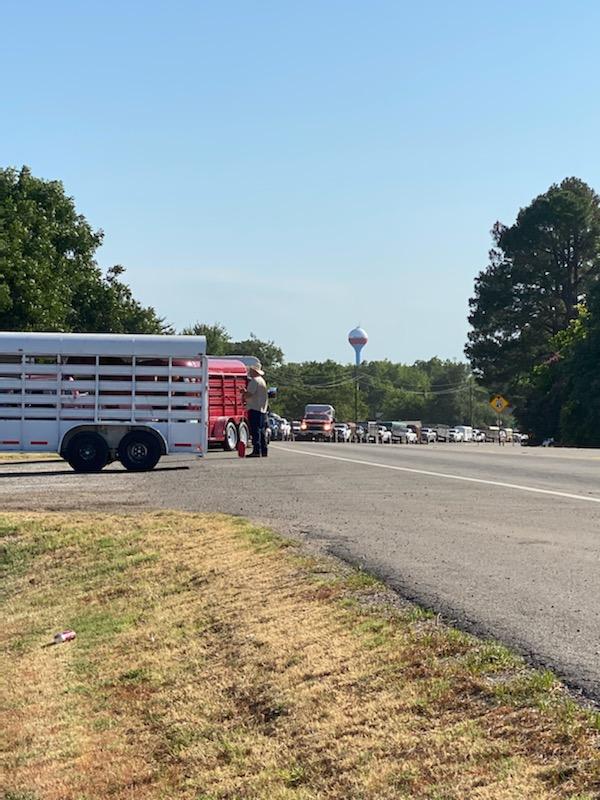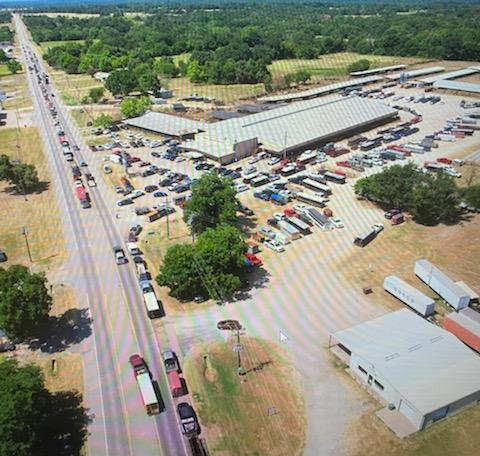Mile-Long Lines at Texas Livestock Auction: Drought Persists as Feed Costs Rise

Trailer lines stretched for a mile in both directions, waiting to unload livestock at Emory Livestock Auction in Emory, Texas for the July 9 sale.
Located 65 miles east of Dallas, this ‘melting-pot’ sale barn held its typical sale following the Fourth of July holiday. The sale brought in a total of 3,494 head of livestock, including cattle, horses, sheep and goats, from 527 sellers.
Of the 3,494 head, 2,763 were cattle with 935 head classified as breeding stock.
The influx of livestock may be due to several factors, including:
1. Drought conditions
2. Cost of feed and fertilizer inputs
3. A long stretch between sales due to the holiday
4. Steady sale prices
The local law enforcement and fire department helped keep the town’s business streets and roads open as trailers bottlenecked the barn’s entry.
Photos courtesy of Amanda Butler:



Sale day started with goats and sheep followed by horses and cattle. Auction cry began at 9 a.m. Saturday morning and concluded Sunday morning around 2 a.m., according to Amanda Butler of Emory Livestock Auction.
Despite 17 hours on the auction block and hours of waiting in line to drop off livestock, Butler describes the sellers as ‘thankful’. She says more sellers displayed thankfulness in desperation, compared to disgust with long waiting times.
As prices hold relatively steady in the area, sellers have culled livestock to ease the pressure of drought and feed costs on their operation. "Livestock owners can’t afford to use sacked feed all summer long," Butler notes.
Five days after the sale, Emory, Texas received a thunderstorm and hope of improvement in the current drought status—at least in the short term. Rain totals measured .75 inches after the storm, which Butler describes as 'much needed'.
See a close-up video of the trailer lines:







